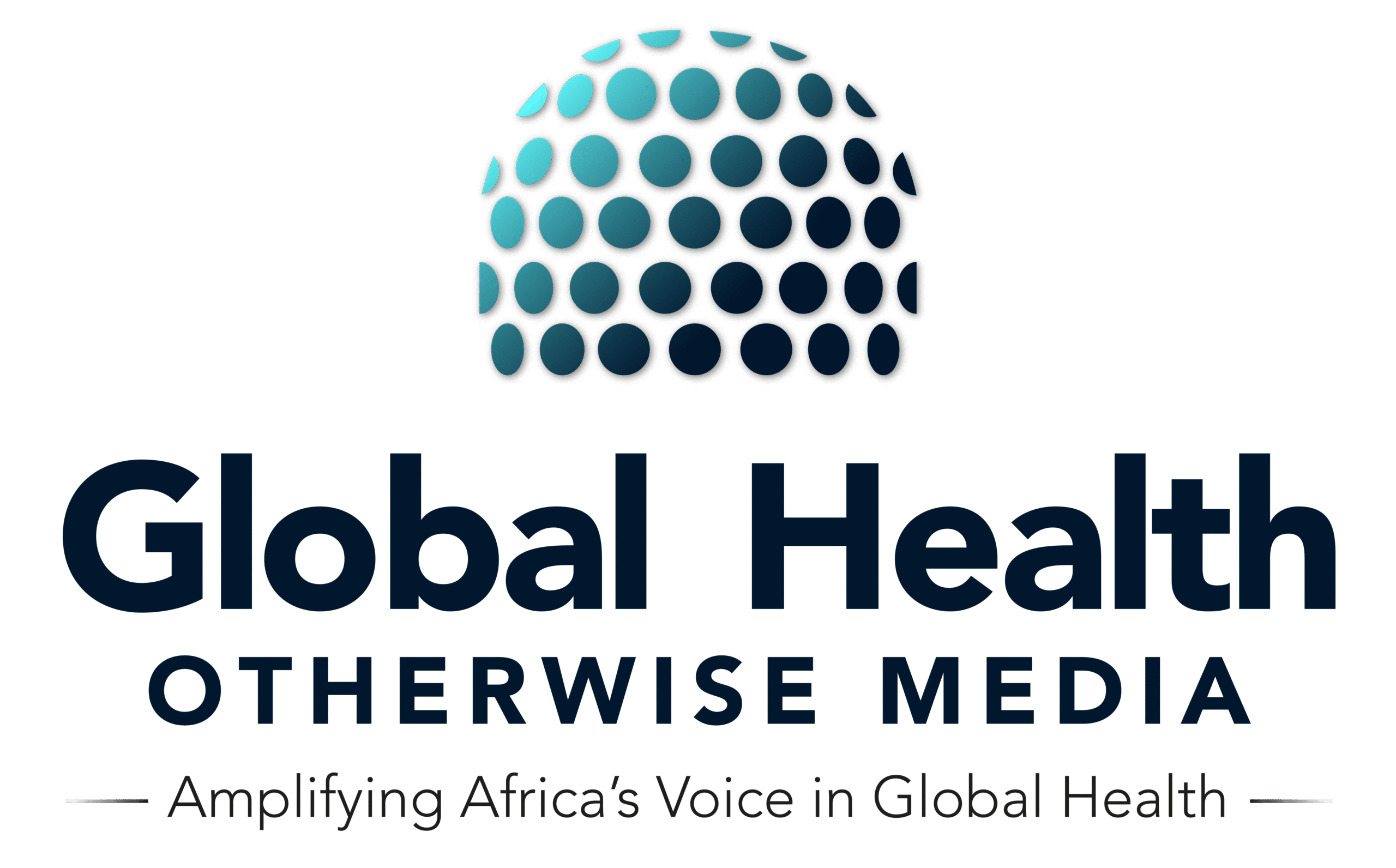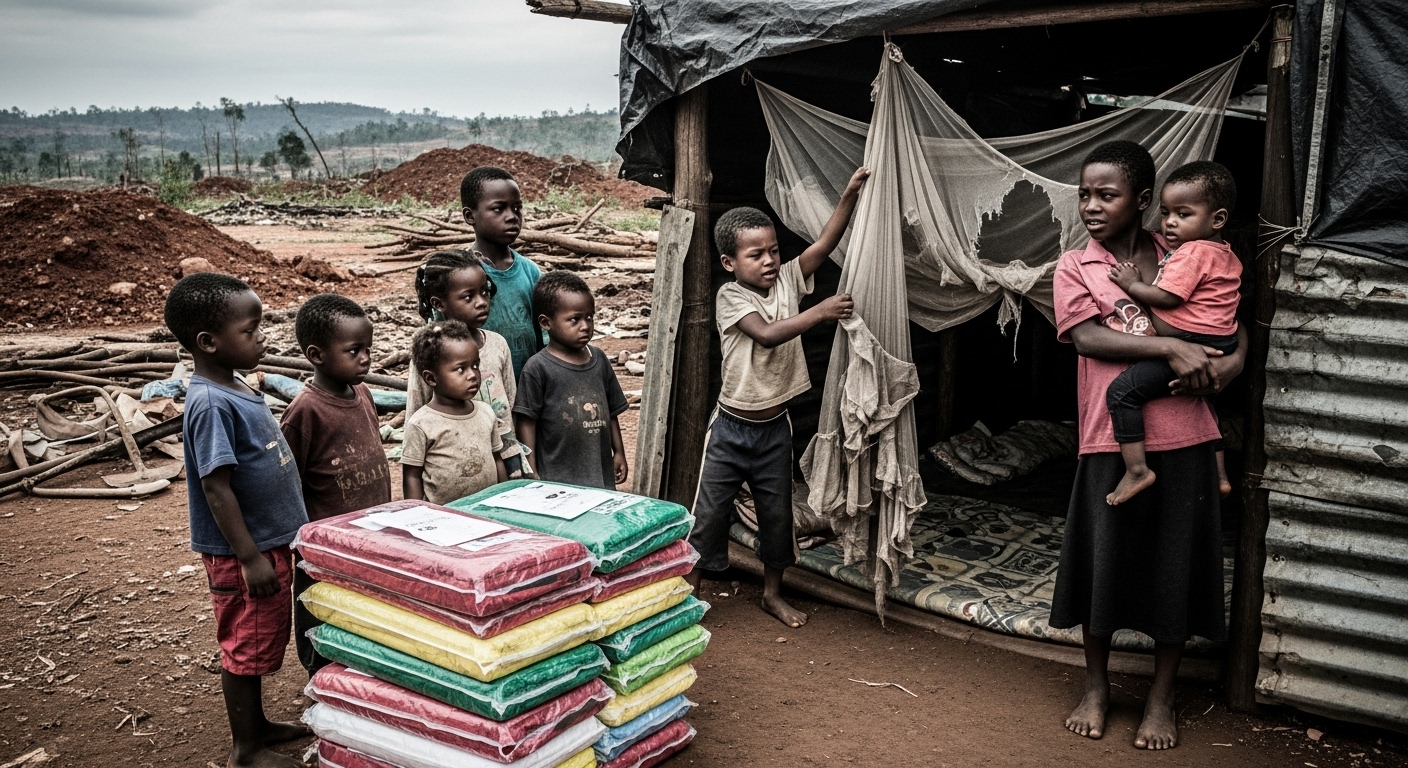Every night in Congo’s mining regions, thousands of children sleep without protection from deadly mosquitoes. The problem is not a shortage of bed nets. UNICEF distributes millions across the Democratic Republic of Congo. The problem is that global health organizations design malaria programs for stable farming villages, then wonder why they fail in mining communities where nothing stays the same.
Traditional bed net campaigns assume families sleep in the same beds every night for years. This works in farming villages. Mining families move constantly, following mineral deposits. Children sleep wherever space opens up, often with different relatives each night. The careful distribution systems that deliver nets to registered households completely miss these mobile populations.
When mining families do receive nets, the harsh conditions destroy them within months instead of years. Dust from mineral processing clogs the mesh. Vibrations from heavy machinery loosen wall fixtures. Sharp metal fragments tear holes in nets within weeks. Standard nets designed to last three years become useless in six months.
Mining families face economic pressures that make bed net programs impossible to follow. Adults work 12-hour shifts in dangerous conditions, leaving children unsupervised for long periods. When exhausted miners return home, setting up bed nets becomes the last priority after brutal workdays. The nets require proper hanging, tucking, and daily maintenance. Overwhelmed caregivers simply cannot manage this routine care. Meanwhile, children too young to understand malaria prevention sleep unprotected night after night.
Mining communities experience conditions that make children vulnerable to severe malaria beyond just mosquito bites. Malnutrition, poor sanitation, and overcrowded living spaces increase susceptibility to serious illness. Research from Nigeria’s 2021 Malaria Indicator Survey shows that larger families experience overcrowding that creates more breeding grounds for mosquitoes.
Open water sources from mining activities provide perfect mosquito breeding sites. Inadequate sanitation systems and poor housing construction multiply the problem. Studies of refugee settlements reveal similar patterns where displacement, overcrowding, and limited services create ideal conditions for malaria transmission. In mining areas, these factors combine to overwhelm any single intervention like bed nets. Environmental management becomes impossible when concentrated populations face inadequate infrastructure and services.
Some 200,000 people work in artisanal mining in Congo’s Katanga region, most scraping survival from soil with manual tools under hazardous conditions. Mining companies profit from cheap labor while contributing almost nothing to community health beyond token corporate programs. These corporations could fund alternative malaria prevention designed for mobile populations. Long-lasting insecticide-treated clothing would move with families. Community-wide indoor residual spraying programs would protect everyone simultaneously. Instead, companies rely on international aid organizations to provide basic health interventions while industrial pollution continues devastating communities.
Water bodies suffer contamination from acidified industrial waste, yet mining companies contribute nothing substantial to health solutions beyond meaningless corporate social responsibility initiatives.
UNICEF recently distributed 5.5 million nets at a cost of $36 million, but these mass campaigns focus on impressive distribution numbers rather than actual usage rates in vulnerable communities. Organizations evaluate success based on nets distributed, not children actually protected from malaria. Programs designed in Geneva and Washington ignore local realities that determine whether interventions work. Bed nets represent the cheapest option for donors seeking measurable outputs, regardless of whether they protect the most vulnerable children. This approach allows everyone to claim success while children continue dying from preventable diseases.
The structure of Congo’s mining economy makes conventional solutions impossible. Artisanal and small-scale mining employs 90 percent of the workforce, while small-scale cobalt mining accounts for 20% of national output. Many miners work illegally on sites allocated to formal enterprises, operating outside any corporate structure. Most mining families live in informal settlements around artisanal operations that exist entirely outside formal company oversight. Demanding that mining companies provide adequate housing misunderstands how mining actually works in Congo, where extraction happens through individual diggers and small cooperatives, not corporate operations with employee housing.
Alternative prevention strategies must acknowledge this informal reality. Long-lasting insecticidal materials integrated into clothing or blankets would move with families as they follow mineral deposits. Community-wide environmental management around artisanal sites could eliminate mosquito breeding areas through coordination between government, mining cooperatives, and health organizations. Mobile treatment centers that follow mining populations could provide rapid diagnosis and treatment when prevention fails. These services would need to reach dispersed, often illegal mining camps rather than formal company towns that barely exist in mining regions.
The continued focus on bed net distribution represents more than ineffective programming. It demonstrates how international health organizations prioritize donor satisfaction over child survival. Distributing nets generates positive headlines and impressive statistics. Addressing complex social and economic factors that make mining children vulnerable requires sustained engagement that donors find less appealing.
Children in Congo’s mining communities deserve malaria prevention designed for their actual living conditions in informal, mobile settlements around artisanal operations. Until health organizations acknowledge that most mining families operate outside formal structures, bed net campaigns will continue failing the children who need protection most urgently. The solution requires confronting uncomfortable truths about how global health programs serve donor interests rather than vulnerable populations.Real protection means addressing root causes: adequate housing, mobile health teams, environmental management, and economic solutions that address the desperation forcing families into mining areas where health infrastructure is nonexistent according to WHO reports on the Democratic Republic of Congo. Only by designing interventions for the reality of mobile, informal mining communities can we begin to protect the children who need it most.

